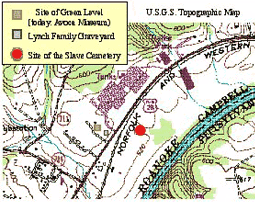Who Preserves Heritage?

African Americans celebrate ‘Homecoming’ and re-internment of their ancestral human remains in the African Burial Ground October 2003.
Heritage Preservationists range from everyday people acting informally as concerned citizens, to citizens actively engaged in preservation at the local community level, to those who along with professional preservationists operate more formally in wider domains at the municipal, state, region, national, or international level. Within these contexts NPS participates both informally and formally in heritage preservation.
HP in Local Domains
When everyday people affirm their identities by celebrating cultural traditions and “re-presentation” of their heritage they are using culture and history strategically to bring about social change (Alonso 1988). The preservation of one’s history through commemorating people and events or preserving sites and structures are some of the most common cultural strategies people use. A society’s philosophy, values, ethics, and morality are embodied in the institutions, events, heroes, and “sheroes,” that everyday people memorialize (Alonso 1994).
Locally people may pass on oral traditions or protect historic structures, landscapes, or objects from destruction or deterioration. Protection and stewardship of cemeteries is one of the most common examples of informal heritage preservation by local community groups. However, formal heritage preservation also takes place in local domains. Furthermore, the distinction between informal and formal heritage preservation blurs as “concerned citizens” become more involved in heritage preservation activities.
In another example, a local concerned citizen cared for the Frederick Douglas home in the Anacostia community of Washington, DC for over a decade before the structure and its contents became part of the National Park System. Local community heritage preservationists protect photographs, documents, and memorabilia comprising the heritage and history of the Anacostia community from mid-19th century to the present. They also actively engage in oral presentations at local schools and other community sites to pass on local history and heritage traditions to new generations (Dale 2002).
Melissa Fuel Cuther, a Missouri schoolteacher who recognized the significance of George Washington Carver’s contributions to American society, determined that his birthplace should be preserved, and his accomplishments and his life as a humanitarian commemorated in perpetuity (Carver Memorial Yearbook 1943–1953; Kidder 1968; William Jackson, Personal Communication 1999). Working almost completely in the informal sector of heritage preservation, in 1943 Cuther succeeded in gaining Congressional authorization of Carver’s birthplace as the first National Park unit commemorating African American history and heritage.
Informal heritage preservation activities often merge with formal activities at the municipal, state, and national level, in both the private and public sector. A case in point is the story of what were initially informal heritage preservation activities of African American women developed into more formal actions resulting in establishment of the first national park honoring an African American woman. What we describe here as “heritage preservation,” everyday people may call “just being concerned citizens.” NPS also alludes to concerned citizens in Directors Orders 75A when it uses the terms “civic engagement and public involvement” to describe the essential stewardship role the public has in taking care of national parks for the enjoyment of present and future generations (NPS 2003a). For the NPS, public contributions vastly improve the decision-making process in parks by introducing or enhancing understanding of diverse concepts and distinct perspectives held by park partners and the public.






